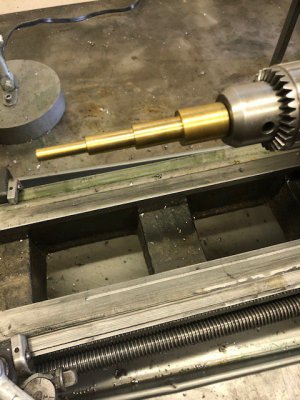When I am putting a piece in the 4 jaw chuck (regardless of its' shape) I measure the OD of the work piece so I know its' diameter/dimensions. Then, using 1/2 that diameter, I "eye ball" across two of the jaws trying to align them with each other and then set one of the other jaws off from center using that dimension. Then, after rotating the chuck 90 degrees, I do that same procedure for the next jaw. Having two jaws set this way, I just make sure the opposite jaws are open larger than the diameter and tighten those two onto the work piece.
I've gotten pretty good at this and can typically get a work piece aligned within a turn of a dial indicator (0.100" TIR). It's quick and easy once you get used to doing it this way. As others have said, it does take practice.
Ted

